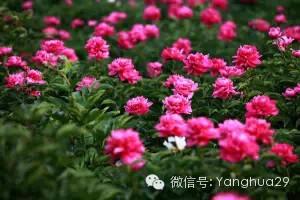Technical exchange of grass carp culture and forage planting
The economic benefits of the four big fish and grass carp are good, and everyone likes breeding. When grass carp eat grass, everyone is innocent. In the past, farmers raised grass carp and mowed their own grass, but now there is nothing to cut grass. If grass carps are cultivated in a large area, there is not so much grass, but they can only grow their own forage grass to feed the fish. Today, let's talk about forage planting, pure communication, you can complain, but don't brag.
First, the grass grass that popular science grass carp like to eat:
There are many kinds of green fodder for fishing, including ryegrass, winter pasture 70, Sudan grass, barnyardgrass, millet grass, hybrid wolftail, alfalfa, white clover, red clover, bitter clover, corn, pumpkin, potato, water hyacinth, duckweed, turnip, Ellosia, bitter grass, verticillum, Artemisia, etc.; water, water spinach, alternanthera philoxeroides (water peanut) and so on.
Warm reminder:
Several green fodder varieties should be selected according to local conditions, such as light, precipitation, fertilizer sources, soil conditions and aquaculture varieties, so as to form a reasonable planting and utilization model. It is necessary to combine water and land, plant terrestrial fodder on the ridge and slope of the pond, and cultivate aquatic green fodder on the surface of waste ditches and ponds, inlet and drainage channels and the surface of shrimp and crab culture, so as to raise ponds and water.
2. Planting forage grasses scientifically:
1. Three varieties should be adapted to local conditions to achieve the goal of supplying young people in one year.
2. Determine how much area forage needs to be planted, such as 0.067 hectares (mu) to produce about 500kg of fresh fish, 4000kg to 5000 kg of green fodder for the whole year, and about 0.034 hectares of green fodder land.
3. the proportion of forage grass and stubble changing techniques, such as legume clover (red clover, white clover, alfalfa, etc.), Gramineae ryegrass (winter mu 70, multi-flowering ryegrass, etc.) and hybrid pennisetum (or Sudan grass, etc.). It can have the effect of providing green for one year.
4. The succession of varieties before and after. For example: clover: before and after sowing in early September, the row spacing is 25cm, and the sowing rate is 0.51kg per 0.067 hectares. on land where clover has not been planted, rhizobium should be inoculated when sowing. Ryegrass: sown around the beginning of September in preparation for partial strip sowing of hybrid pennisetum with a row spacing of 30 cm and a sowing rate of 1.5kg per 0.067 ha. Hybrid Pennisetum equisetum: transplanted twice. The first transplanting was in mid-late April, and sufficient basal fertilizer was applied before transplanting, and the second transplanting was at the end of May, waiting for the last cutting and utilization of ryegrass. 2000 plants were transplanted in the first time and 2500 plants were transplanted in the second time per 0.067 ha.
5. In the mixed culture structure, the stocking mode should be based on herbivorous fish such as grass carp, carp and blunt snout bream, which can account for more than 50% of the total weight of fish fingers. and mixed culture of about 35% of filter-feeding fish such as silver carp and bighead carp and about 15% of omnivorous fish such as common carp and crucian carp, so that herbivorous fish can be fed directly with green feed. They feed on residual bait, plant debris and humus, which can provide bait for omnivorous fish.
III. Concluding remarks:
Fish farmers are welcome to comment on their technology, avoid risks and get rich.
- Prev

Culture methods and matters needing attention of Paeonia lactiflora
Paeonia lactiflora belongs to Ranunculaceae and Paeonia lactiflora. There are fleshy thick taproots with tufted stems and purplish red and green stems and leaf peduncles. Ye Husheng,
- Next

A must-read for ornamental fish culture-- bait
Both goldfish and tropical fish can be divided into three categories in terms of their eating habits, namely, carnivorous, vegetarian and omnivorous. But mainly carnivorous and omnivorous.
Related
- On the eggshell is a badge full of pride. British Poultry Egg Market and Consumer observation
- British study: 72% of Britons are willing to buy native eggs raised by insects
- Guidelines for friendly egg production revised the increase of space in chicken sheds can not be forced to change feathers and lay eggs.
- Risk of delay in customs clearance Australia suspends lobster exports to China
- Pig semen-the Vector of virus Transmission (4)
- Pig semen-the Vector of virus Transmission (3)
- Five common causes of difficult control of classical swine fever in clinic and their countermeasures
- Foot-and-mouth disease is the most effective way to prevent it!
- PED is the number one killer of piglets and has to be guarded against in autumn and winter.
- What is "yellow fat pig"? Have you ever heard the pig collector talk about "yellow fat pig"?

